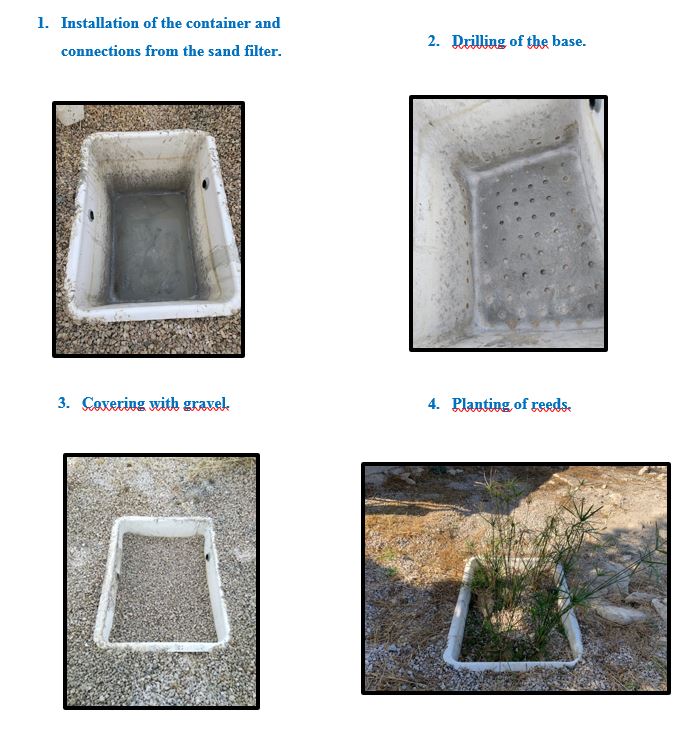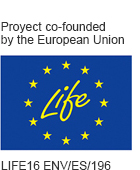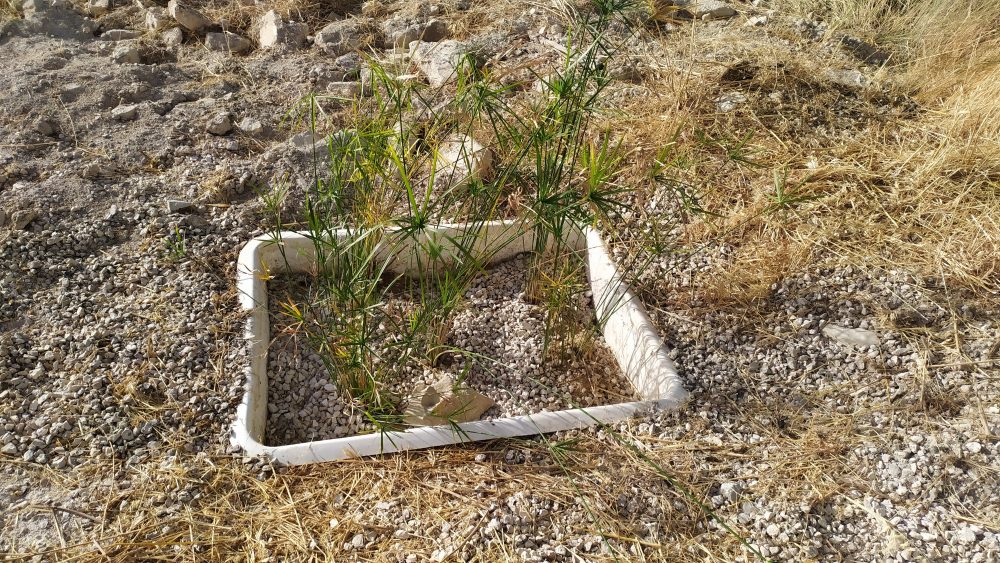This is a small artificial wetland in which the water from the sand filter is treated.
In order to ensure that the elimination of nitrates from water intended for human consumption is a circular process in which the production of waste is minimised as much (or completely) as possible, the proposal included the construction of an artificial wetland for the purification of the reject water generated in the biological purification system.
This is a small artificial wetland, measuring approximately 1 m x 1 m, where the water from the washing of the sand filter is conveyed, in which the organic matter that may come out of the bioreactors in the emptying phase is retained. The possible remains of granules and filaments gradually clog the sand filter, which will need to be washed at regular intervals to ensure its proper functioning.
This wetland is perforated at its base to allow excess water to drain away in the event of rainfall. It has been filled with gravel of a medium granulometry to prevent waterlogging and, at the same time, allow the roots to develop properly. The plant chosen for this phytodepuration process was the reed (genus Juncus L.).
The construction procedure is shown in the following images:




